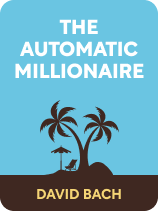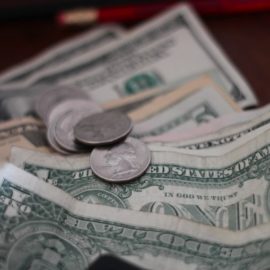

This article is an excerpt from the Shortform book guide to "The Automatic Millionaire" by David Bach. Shortform has the world's best summaries and analyses of books you should be reading.
Like this article? Sign up for a free trial here .
Are you struggling to pay off your debt? How do your debt contributions prevent you from spending your money the way you’d like?
Prioritizing clearing debt seems like a no-brainer—many of us dream of having a debt-free existence. When you have no more debt, you can enjoy a better lifestyle and start putting money aside (through investments or savings) to ensure you also get to live comfortably in the future.
In this article, you’ll learn how to make a plan for clearing your debt so you can start directing your money towards more worthwhile pursuits.
Clear Your Debts
Like most Americans, you’re probably carrying some debt—the average American family owes $8,400 in credit card debt, and, in total, Americans owe approximately half a trillion dollars in credit card debt. Why is this? Bach claims it’s because people are more focused on looking rich than they are on actually being rich. In other words, they rely on credit to maintain the illusion of a rich lifestyle while they risk their financial security.
Further, the average American only pays the minimum balance due every month—for $8,400 charged at 18%, it will cost them $20,615 over the course of 30 years to pay off the balance, and that’s based on the assumption that they pay regularly and don’t add further debt to the balance.
| Are You Making Excuses for Your Debts? Prioritizing getting out of debt seems like a no-brainer. many of us dream of having a debt-free existence. So, why is it that so many people don’t prioritize clearing debt—and, in fact, allow it to grow? Bach doesn’t explore this question in detail; but, according to Sethi, people allow their debts to get out of control because they often find ways to justify remaining in debt. They: Accept that being in debt is “normal” and justify it by comparing their debts to the debts that their friends and family owe Feel defeated by the size of their debts—their debts are so huge that they assume that they’ll never be able to pay them off so they don’t bother trying Blame credit card companies for “preying” on them instead of taking responsibility for their decisions Try and stay mindful of the excuses you use to overlook your debts throughout the rest of this chapter. Ultimately, no matter what excuses you tell yourself, getting out of debt is both possible and a good idea. |
The Automatic Millionaire Debt-Clearing Plan
In his book The Automatic Millionaire, David Bach presents a four-step plan for clearing debt:
Step 1: Total Up Your Balances and Interest
Bach states that if you’re currently in debt, you’ll need to total up the balances you owe and the amount of interest you’re paying on top of this balance. Ask yourself the following questions:
- How many credit cards do you (including your dependents) have?
- What is your current outstanding balance in total?
- What is the average interest rate you’re paying on these balances?
Step 2: Make Commitments
Next, Bach recommends committing to two principles:
- Don’t buy things you can’t afford (property is the only exception as it tends to appreciate in value).
- Refuse to use credit cards—cancel them and remove the temptation to use them.
Step 3: Reduce Your Payments
Next, Bach says it’s time to try to reduce your debt payments:
- Contact your credit card company and ask if they can lower the rate of interest you’re paying (tell them you’re thinking about moving your balance to a company that offers a lower interest rate).
- Consolidate all of your payments—if you have multiple debts, consider moving them all to a single low-interest account (check Bankrate for the latest offers).
- Automate your payments to avoid paying late fees or penalties
Step 4: Prioritize Your Debts
Instead of consolidating your payments, you could choose to pay off your debts one by one. To determine the most cost-effective way to pay off your debts, Bach suggests dividing the balance of each debt by the minimum payment required—this will show you the number of payments you need to make to pay off the debt.
- For example, you have two debts with a balance of $1,000. The minimum payment for the first debt is $10 so it would take 100 payments to clear this. The minimum payment for the second card is $20 so it would take 50 payments to clear this.
Next, rank your debts so that the lowest number of payments is on top. So, continuing with the previous example, the debt that requires 50 payments will be on top—this is the debt you will clear first. Prioritize paying off this debt as much as possible while you continue to pay the minimum balance for your remaining debts. Once you’ve cleared this, keep working down your list in this way until you’ve cleared all of your debts.
Balance Your Investments
Bach suggests that you continue to invest in your retirement even while you clear your debts. He notes that if you wait until your debts are paid off before you start saving, you’ll get used to not saving. On the other hand, if you keep investing in your retirement accounts, he says that the progress you make will motivate you to clear your debts so that you can invest even more towards your future wealth.
(Shortform note: Bach suggests that you continue to fund your retirement account so that you can make financial progress. However, Sethi argues there’s another reason for doing this: You can make use of your ever-growing retirement account when you’re faced with a financial emergency. Sethi suggests that, if you end up with unexpected expenses and your only option is to use your credit card, you should consider withdrawing money from your retirement account instead. While this will incur losses on your retirement earnings, you’ll still save more than if you increase your existing credit card balance—and the exorbitant interest rates that come with it.)

———End of Preview———
Like what you just read? Read the rest of the world's best book summary and analysis of David Bach's "The Automatic Millionaire" at Shortform .
Here's what you'll find in our full The Automatic Millionaire summary :
- A simple but powerful action plan for you to quickly automate your finances
- How to grow your finances with just a few dollars a day
- An exploration of why people fail to prepare for their financial futures






